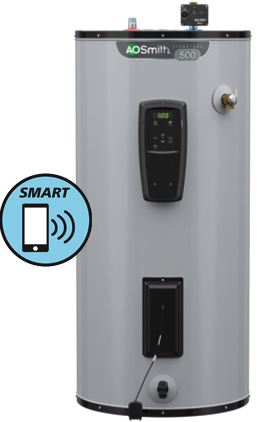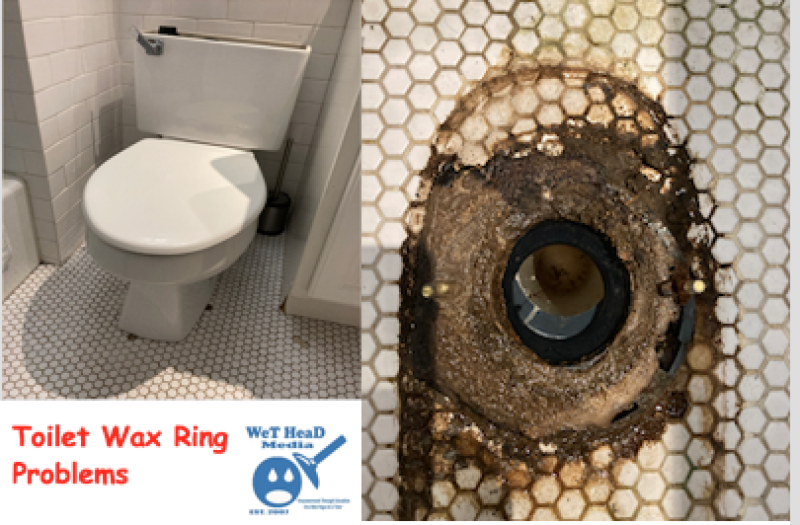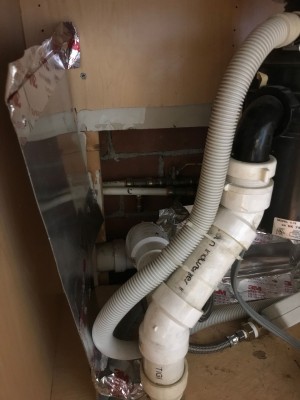How To Install A Gas Hot Water Boiler
 Installing a boiler can be a big job so be prepared to spend some time on this project if you have never done it before. The will be a few differences between installing a natural gas boiler compared to a propane fired boiler like the type of gas it runs on as well as the regulators and gas valve will be different. Other then that the basic piping and venting will be the same.
Installing a boiler can be a big job so be prepared to spend some time on this project if you have never done it before. The will be a few differences between installing a natural gas boiler compared to a propane fired boiler like the type of gas it runs on as well as the regulators and gas valve will be different. Other then that the basic piping and venting will be the same.
Before you decide to install any type of boiler make sure that you are licensed or certified to be doing this type of project. Most states require a permit to be pulled when installing or replacing a new boiler. So make sure to check with your local building codes department before you install the has hot water boiler.
Prepare the boiler Location:
The first step in install a gas fired boiler is to prepare the boiler location. You are going to want to check for all connections you are going to need. For example you are going to want to make sure that you have water lines, gas lines and electrical circuits all near the location that the boiler is being installed. If you do not have these connections near by then make sure to add this to your budget and plan on how your going to feed water and gas to the boiler. Make sure that there is no combustible liquids or solids where the boiler is going to be installed as well.
Prepare the boiler:
The first thing you will want to do is to remove the boiler from the shipping carton. The boiler will be bolted down with 5/16 screw that will be on the bottom of the boiler. Remove these screws and then slide the boiler of of the wood pallet. Make sure to be responsible and discard of the packaging material the right way.
You will now will want to start taking everything out of the store boxes including all your zone valves, circulator pumps and all other boiler dressing accessories that you have purchased for the boiler installation.
Dressing Up The Boiler:
This phrase will sound odd to you if you have never worked on boilers before. The phrase “dressing up a boiler” means that you are going to add all the boiler accessories. Things like the circulator pump, flo-checks, riser nipple and so on. Basically everything that the boiler is going to need to operate that was shipped or bought separately and needs to be installed. That’s why they call it dressing up the boiler.
Installing the return & feed water Piping:
The forced hot water system requires you to have a feed and return on each boiler. You will now need to pipe the feed and the return lines. Most people like to out the circulators on the return side of the boiler and the flo-checks on the feed side. You can however use zone valves if you choose to. Make sure to also plumbing in your coil or super-store hot water tank, as well as the boiler water feed valve.
Always make sure to properly size the piping and zones to determine how many circulators you will need for the boiler. A common mistake is not having enough circulators on the system which will give you nothing but pump failures for the years to come.
Installing the venting & Flu Pipe:
The boiler will have to be properly vented for safety. Depending on what type of boiler you have ( combi, powervent, hydronic ), will depend on what type of venting you will need. For example on a traditional gas fired forced hot water boiler you would generally vent this type of boiler with standard smoke pipe. If you have an on demand combi boiler or a tankless boiler that has a power-vent, the venting will be completely different. See the installation manual that came with the boiler for the recommend venting instructions and procedure.
Connecting the gas to the boiler:
Depending on what type of gas you have in your building or home will depend on how you hook up the gas lines. If you have a propane unit you can connect to the regulator and then to the gas valve by following your local plumbing code and using the allowed types of pipe. In many states copper lines are allowed to be flared and used for delivery of propane gas to the unit.
If you have natural gas you can use black threaded pipe to hook up to your existing gas main lines in many states, but off course you will want to check with your local plumbing code before doing so. The gas line will run from the existing gas lines to the regulator on the boiler. You will need to know how to cut and thread black iron pipe and depending on the area that the boiler is going in will depend on the application of the gas lines. Make sure to due proper planing before doing any gas work.
There is off course more to installing the gas line then this but it is always best to check with the installation manual that came with the unit for their recommend installation procedure. If you are not licensed or certified to do gas work you should hire someone that is, safety first.
Filling & Starting the boiler:
Once you know that everything is completely hooked up you can turn on your water supply and the use the automatic feed valve to fill the boiler to the proper pressure that the boiler manual says. Most boilers have fill pressure setting of around 18 – 22 psi.
Now that you have all the gas and water connections made, the boiler full of water, you can hire a licensed professional to start the boiler for you because they will need to adjust the c02 output to a safe level as well as check all the flu venting.
Once the licensed professional has tuned and adjusted your boiler, the service tech should give you a green light to use the boiler to heat your home or office.




Hi
If installing a condensation boiler, how tall can a vertical stack be to vent out through the roof of a conservatory. Would the vertical component need to have an ‘L’ at the top?
Thanks
MikeD
You’re truly a good webmaster. The site loading pace is incredible. It seems that you are doing any unique trick. Also, The contents are masterwork. you’ve performed a excellent process in this matter!
First time here, but it is full of information in this site. So useful!
You made a great point about choosing the place of the boiler in order to have access to water lines, gas lines, and electric circuits simultaneously. The harshness of the previous winter inspired me to invest in a water boiler so I’m looking forward to getting one installed. Maybe I can even look into having aromatherapies during hot baths. It’s going to be exciting to be able to have access to hot water all the time.